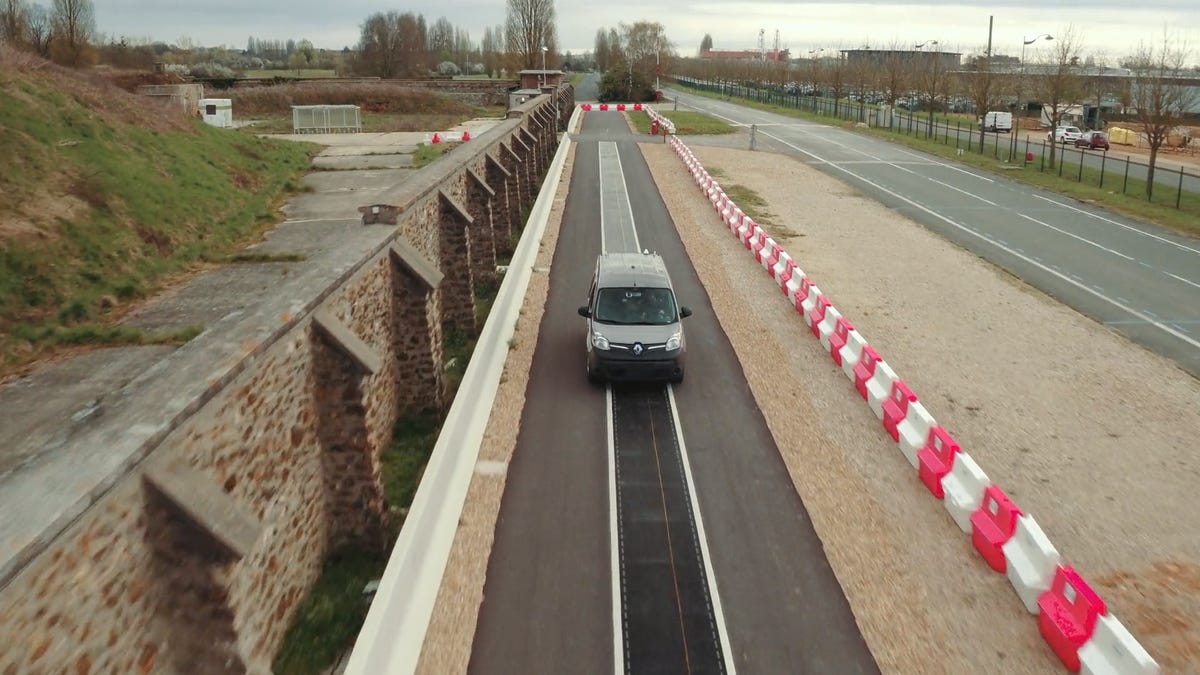Qualcomm's inductive charging road could pave the way to new EVs
Imagine a future where your electric car is charged with wireless power from the road as you blast along at highway speeds.

Imagine a future where your electric car is seamlessly and wirelessly charged by the highway that it rides on, no plug required. That's what Qualcomm Technologies is working on today and what it is demonstrating at an event this week with its dynamic electric vehicle charging system in Satory Versailles, France.
The dynamic electric vehicle charging (or DEVC) technology is able to wirelessly send up to 20 kilowatts of inductive charging power to a compatible electric vehicle traveling across it at highway speeds. In partnership with French research institution VEDECOM, Qualcomm has installed the tech in a 100 meter segment of test track that it calls FABRIC, which rather ridiculously stands for "FeAsiBility analysis and development of on-Road chargIng solutions for future electriC vehicles." That's an oddly abbreviated, awkwardly capitalized mouthful.
During the FABRIC demonstration, two specially prepared Renault Kangoo vehicles will share the course and charge on-the-go and at the same time. The aim is to show-off how the technology could work in the real world where multiple vehicles would need to dynamically negotiate receiving pulses of power as they quickly move across the many small (around 1 meter) high-power inductive coils, which is much trickier than sitting stationary and perfectly aligned over a parking pad.
Qualcomm sees inductive roads and DEVC as a potential cure for range anxiety; topping up cars as they roll over the charging segments could mean exiting a highway with more power than you started with. However, the tech also has the potential to shape the way future EVs are built and how much they might cost. Widespread inductive charging for parking and for roads could mean that EVs might get away with using smaller, lighter batteries since they'd be rejuicing more often or a 40-50 mile stated range could be stretched significantly further while the road is supplying power along the way.
I was able to speak with Qualcomm Principal Engineer Bill Von Novak, an expert on DEVC who was part of the team that invented wireless charging.
Novak states, "To me, the biggest advantage is allowing cars with smaller batteries to make useful trips. That includes picking up the kids on a busy day and getting a little bit of charge from the roadway or taking a small-battery EV from San Diego to LA on I-5 while the highway charges the car along the way. The main advantage of this is that it allows you to have ranges and do things with electric cars that otherwise you just couldn't do without spending a huge amount of money on batteries."
However, the wirelessly charging road to the future isn't without a few speed bumps. Novak explains that the advantages of inductive roads for very short trips are minimal, so inductive tech will live alongside traditional plug-in charging for some time. There's also the issue of the increased cost of building the powered roads compared over regular pavement and the question of how drivers will be billed for the power they use.
Those are bridges Qualcomm won't have to cross until later. Its road map for wireless vehicle charging starts with stationary park and charge spaces and evolves to stationary in-road charging at traffic lights and bus stops before reaching DEVC highways much further down the road.

